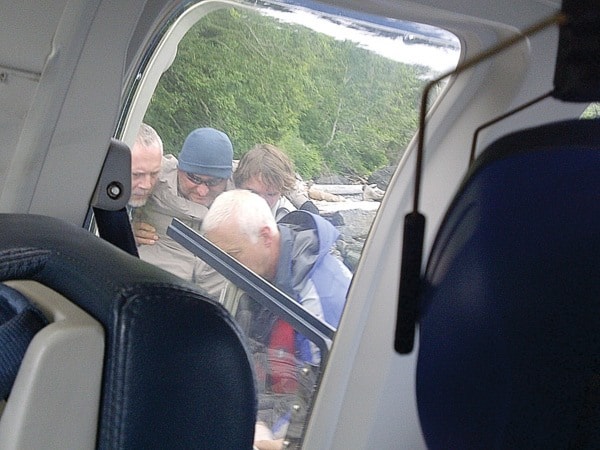Specialized helicopter training came in handy for volunteers from Campbell River Search and Rescue (SAR) who plucked an injured hiker off the West Coast Trail.
Local rescuers were called Monday, at 2 p.m. to extricate the middle-aged man who had suffered an ankle injury during the hike.
Rangers from Parks Canada had located the man on a section of the trail near Port Renfrew, but were unable to pack him out due to the difficult terrain.
That’s when the call went out to mobilize the heli-rescue team from Campbell River.
“We are the only SAR group on Vancouver Island to have this capability,” said rescue manager Grant Cromer.
When they arrived by chopper, a rescue technician was lowered onto the beach to assess the injured man who was unable to walk.
The experienced pilot then took advantage of the low tide and less-than-blustery conditions to set the helicopter on a ledge.
“Our pilot was able to land on a large rock overhanging the ocean, about 15 feet above the swells and hold power,” Cromer explained in a news release.
From there, three rescue technicians assisted the Rangers and packed the man about 30 metres over logs and boulders to the helicopter. He was flown to Port Renfrew and then transferred onto an awaiting ambulance.
“Initially we anticipated doing a long-line rescue with a rescue tech dropping in on a line, but with the skill of the pilot and the perfect conditions of tides and location, we were able to hold power on a large boulder while the team hot-loaded the subject,” said Cromer. “Hot loading means loading persons into the helicopter while the machine is running at full power, often in a hover.”
Cromer added that Campbell River SAR has spent considerable time and expense to train for helicopter rescues, and its vitally important for the entire region.
“This is a very applicable rescue tool,” he said. “Being able to drop a rescue technician…at 1,800 metres, on a rock ledge – compared to having a team hike up then climb up to them – is invaluable. We anticipate utilizing the helicopter rescue team a lot more in the future as specialized rescue situations arise.”
